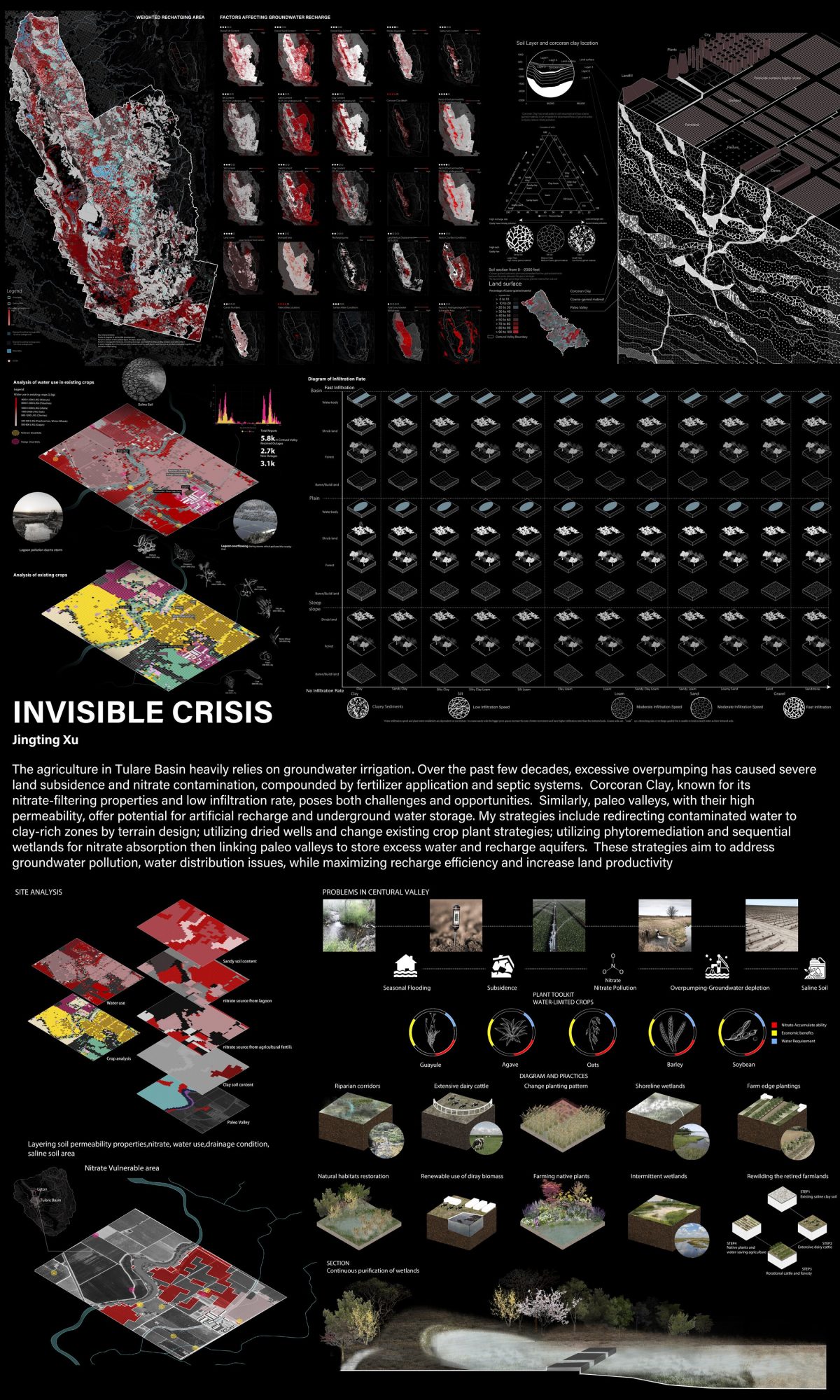The Invisible Crisis
The agriculture in Tulare Basin heavily relies on groundwater irrigation, constituting 97% of water usage. Over the past few decades, excessive overpumping has caused severe land subsidence and nitrate contamination, compounded by fertilizer application and septic systems. Corcoran Clay, known for its nitrate-filtering properties and low infiltration rate, poses both challenges and opportunities. Similarly, paleo valleys, with their high permeability, offer potential for artificial recharge and underground water storage. My strategies include redirecting contaminated water to clay-rich zones by terrain design; utilizing dried wells and change existing crop plant strategies; utilizing phytoremediation and sequential wetlands for nitrate absorption then linking paleo valleys to store excess water and recharge aquifers. These strategies aim to address groundwater pollution, water distribution issues, while maximizing recharge efficiency and increase land productivity

